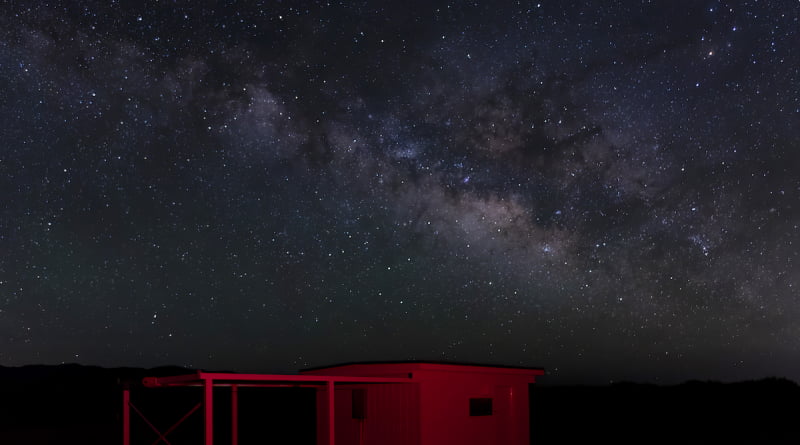Chiricahua Astronomy Complex: An observing mecca for amateurs
[ad_1]
Unfortunately, many astronomy clubs have to deal with ever-increasing light pollution in the cities where they live and observe, forcing them to explore alternate locations for observing. We at the Tucson Amateur Astronomy Association (TAAA) are no exception. Over the past 10 years, our club — which comprises almost 500 members — has been busy building a premiere dark-sky site called the Chiricahua Astronomy Complex (CAC). This 16-acre (6.5 hectares) facility lies in the Arizona desert, about 15 miles (24 kilometers) from the Chiricahua National Monument, situated in the plateau between the Chiricahua Mountains to the east and the Dragoon Mountains to the west.
With Tucson — the nearest major city — 100 miles (160 km) to the northwest, our dark site sports a Bortle 1 sky. (The Bortle dark-sky scale measures the amount of light pollution affecting the sky in a given location. A rating of 1 is the best possible sky, where M33 is visible to the naked eye.) And the dry desert air at 4,800 feet (1,460 meters) elevation makes for some incredible observing.
A closer look at CAC
CAC is funded primarily by donations from individual TAAA members and local Arizona private nonprofit foundations. “TAAA has extremely generous members,” says club president Mae Smith. “Throughout the years, members have given generously to fund the development of CAC and donate the exquisite telescopes and amenities that provide a first-class observing experience. It would have been extremely difficult to accomplish this effort without the assistance of all our members and local foundations.”
In fact, TAAA members were instrumental in the purchase of the CAC site. Following an extensive search in southeastern Arizona, Smith says, in 2007 the club finally found the right spot, near the Chiricahua Mountains. Four members (the Perseus Group) then purchased 40 acres (16 ha) of land, donating the central 16 acres (6.5 ha) to TAAA in 2008, while each retained ownership of a protective 6-acre (2 ha) parcel around the central complex. Due to increasing light pollution in Tucson, we needed a dark-sky location for members to hone their observing skills while providing a place to socialize and enjoy our hobby. This site had dark skies yet was still close enough to Tucson for member access.
Once the property had been secured, TAAA formed a Strategic Planning Committee to design and develop a fantastic observing complex. John Kalas was an original committee member and served as the first CAC director. “It was important to ensure we had a well-designed complex that would allow seamless expansion while maintaining the dark skies with an observing experience second to none,” he says.
Amenities at CAC currently include four RV sites with electricity, two restrooms, a shower, ample parking for members and visitors, and a ramada picnic area. And the club continues to incrementally expand CAC to better serve its members and community throughout southern Arizona, Kalas says.
[ad_2]
Original Post


1,455 thoughts on “Chiricahua Astronomy Complex: An observing mecca for amateurs”